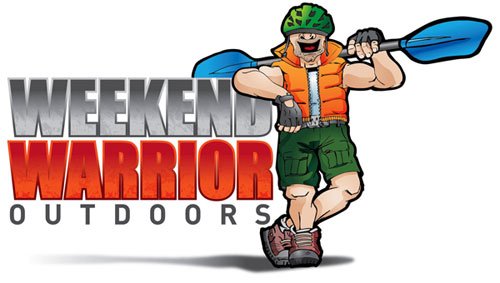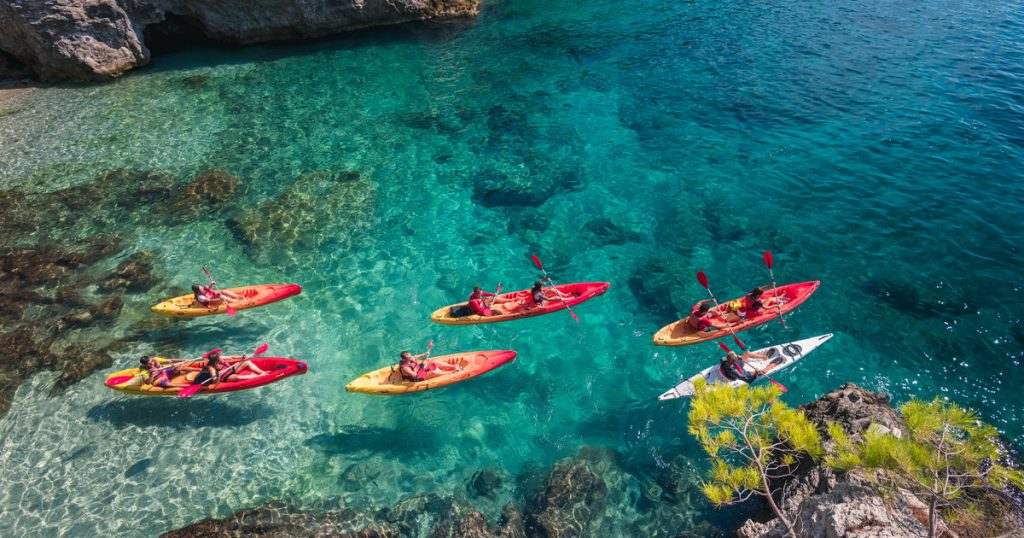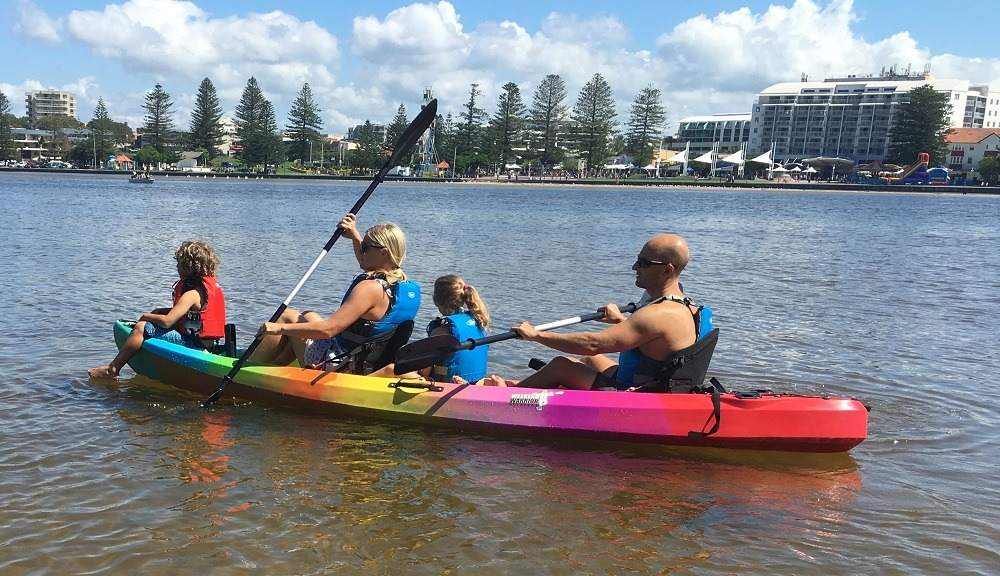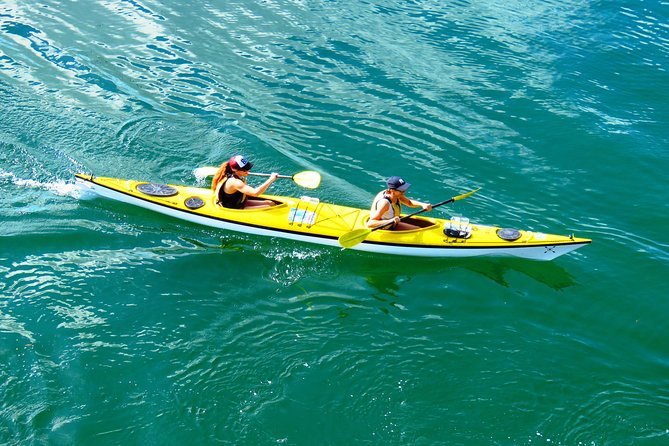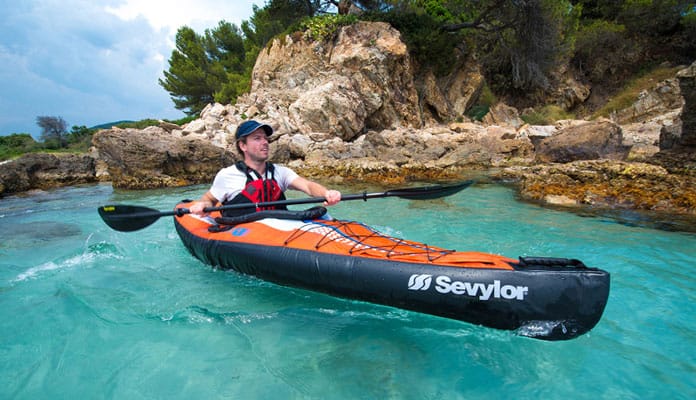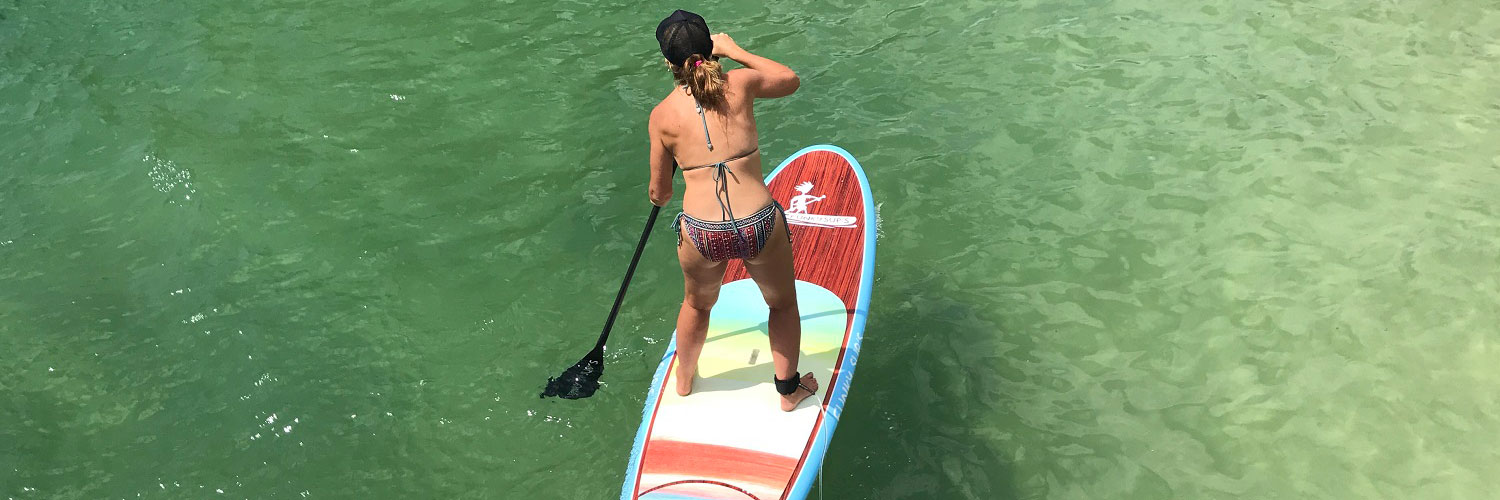
Getting Started Kayaking with Basic Gear
New to kayaking? Looking for some fun on the water?
Here are some great tips to get your started. Easy to use and fun to paddle, kayaks open up vast new watery worlds to explore. You might find yourself floating above a sea of starfish, nosing through a lily-pad oasis, or rocking and rolling among the ocean waves. Ready to get out there? This article offers you tips from Weekend Warrior outdoors. Before You Set Out – You’ll have a much more enjoyable, and safer time on the water with a few key navigation, safety and paddling skills under your belt.
Choosing a Kayak?
Are you a beginner and want to get into the sport of kayaking? There are lots of things to consider when choosing a kayak. Things to consider are what type of kayaking you will be doing, your experience level and of course how much you have to spend. Kayaks vary from a few hundred dollars to a few thousand dollars and often the price is based on the material the kayak is made up of. But you need to keep in mind that weight and durability in a kayak are big factors to consider. For example if you are near rocky beaches or oyster leases than a composite kayak might not be the best solution as you will need to be very careful when using the kayak.
What Type of Kayaking are you going to do?
There are many types of kayaking, sea kayaking, fishing kayaking, whitewater kayaking, touring kayaking and recreational kayaking. To keep it simple if you are thinking of going touring you would not buy a recreational kayak as it would take you forever to get to your destination. So ask yourself what you will be doing in the kayak, if you are simply looking at something to paddle in the lake or river for some fun then a recreational kayak would be the pick.
Kayak Materials
Kayaks come in a variety of shapes, sizes and materials. All these factors affect the price, weight and durability of each kayak. So it is important to consider exactly what you intend to be doing in the kayak as these all have advantages.
Plastic Kayaks
Low Density Linear Polyethylene Plastic LLDPE: This material is the most common material used today and the benefits include the durability and the low cost to produce. The benefit also is that if you happen to damage it or get a small hole you can repair these by plastic welding. These types of plastics can warp in the hot sun but do return to the original shape once cooled.
High Density Linear Polyethylene Plastic HDPE: This is another form of plastic which is lighter in weight than the LLDPE plastic and also offers a glossy appearance as well as has better mark resistance. These are highly durable but more expensive to produce than other plastics. So this material is used often in sea kayaks and better quality fishing kayaks as well as whitewater kayaks.
Composite Kayaks
These are the Carbon, Fiberglass, and Kevlar Kayaks. These are usually made for sea and touring kayaks due to them being lighter, faster and more delicate and glide through the water gracefully. These kayaks are higher in price and although they are lightweight they are less durable than a plastic kayak (of the same size) and need to be handled with care. Especially when launching or landing and when transporting the kayak.
Inflatable Kayaks
Definitely a recreational option, these include inflatable and folding kayaks. Manufactured from a range of cloth-like materials. These are a beginner kayak and do not glide through the water like Plastic or Composite Materials.
In summary each kayak material is designed for a purpose and although a little confusing the basics are to select the right one for what type of kayaking you will be doing. When considering recreational, whitewater and fishing kayaking the only real answer to what material you should buy is Plastic. A Plastic kayak offers so much versatility, durability and is the cheapest option on the market in terms of dollars. If you are into sea kayaking or touring you would consider the composite materials. This is if you have the dollars to spend and want a light weight kayak that you can take care of. There are many great sea and touring Kayaks that perform just as well on the water and are made of plastic.
Here are some Basics on Parts to a Kayak:
- The Front of a kayak is the Bow and the Back of a Kayak is the Stern
- The Top of a Kayak is the Deck and the Bottom is the Hull
- The Toggles or Grab handles help carry the Kayak and these are usually at the bow and stern
- The Openings are called hatches and when sealed these are bulk heads
- The place where you sit in is called the cockpit and the kayak you sit on is called the seat
Essential Accessories to get you started
There are loads of gear you can buy for kayaking but really the essential gear you need is a Kayak Paddle and A Life Jacket.
Kayak Paddle – This is what will propel you through the water and consists of a shaft and two blades. In kayaking a blade has a power face for paddling forward and a back face for paddling reverse. But it might seem confusing and there is no need flip it to reverse. Paddles do come in a variety of materials, shapes and sizes. The most common paddle for beginners is aluminium and is perfect for beginners as these are still light weight and very durable. When paddling using an adjustable paddle you can set the angle to be straight or offset. When using the paddle offset it is great for windy conditions and your body has lots of rotation as you paddle. With a straight paddle this allows you to paddle without having to twist the shaft whilst paddling. Which technique you use is whatever you feel comfortable with so you could try this to see what works best.
Life Jacket or PFD (Personal Flotation Device) – It is vital and also legislation to wear a life jacket when kayaking and ensure it is fitted correctly. The sizing for an adult life jacket is determined by your chest size not your weight. This is different for children where the size is determined by weight. Sizes may vary for brand and model but with Yak the size is often what size you would be in a shirt. So if you were a small shirt than you would select the small/medium size. A life jacket should fit like a glove and be snug so that as you paddle it does not ride up on you. But still let you move freely without chafing as you paddle.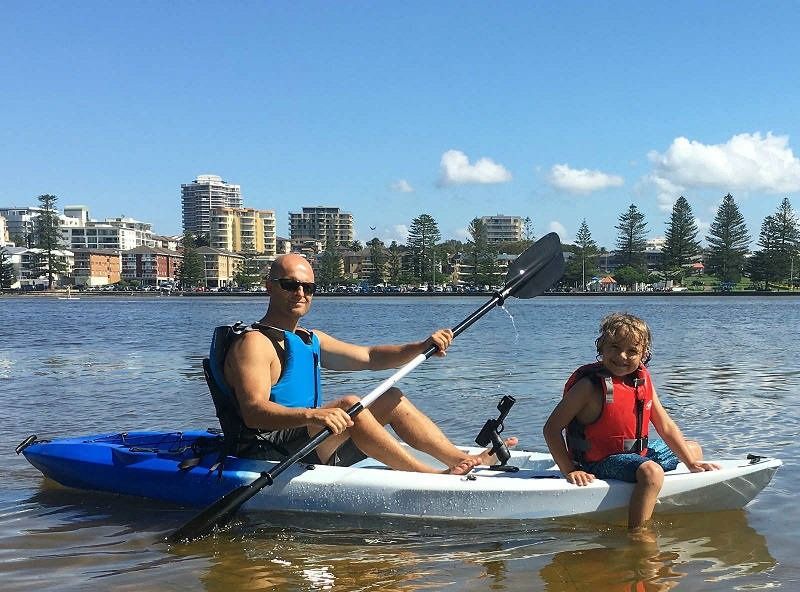
Other Handy hints to get you started in kayaking
- Calm Day – Before you set off for your first kayaking experience it is important you consider the weather conditions. A calm day to trial is the best so you get a feel for your kayak.
- Seat Position – It is important that your lower back is tight against the seat back and that the seat back is straight so that your lower back is supported when paddling. A kayak is not a recliner and if your seat is leaning backwards this will not support you while kayaking.
- Feet Position – Ensure that your foot position is adjusted to your height. The balls of your feet control the foot pedals on a rudder kayak, you need to make sure you have adjusted this with enough room to allow your legs and knees to be in a bent position. This will allow you to control the kayak motion whilst paddling. When using molded in foot positions, which are on most recreational kayaks that don’t have rudders use the same principle of bent knees and legs, never have them straight.
Now it’s time to get paddling and enjoy your kayak. Watch this video on choosing a kayak or our selecting a kayak blog has useful information to guide you.
Tags: choosing a kayak, Fishing Kayaks, Recreational Kayaks, Sea Kayaks
